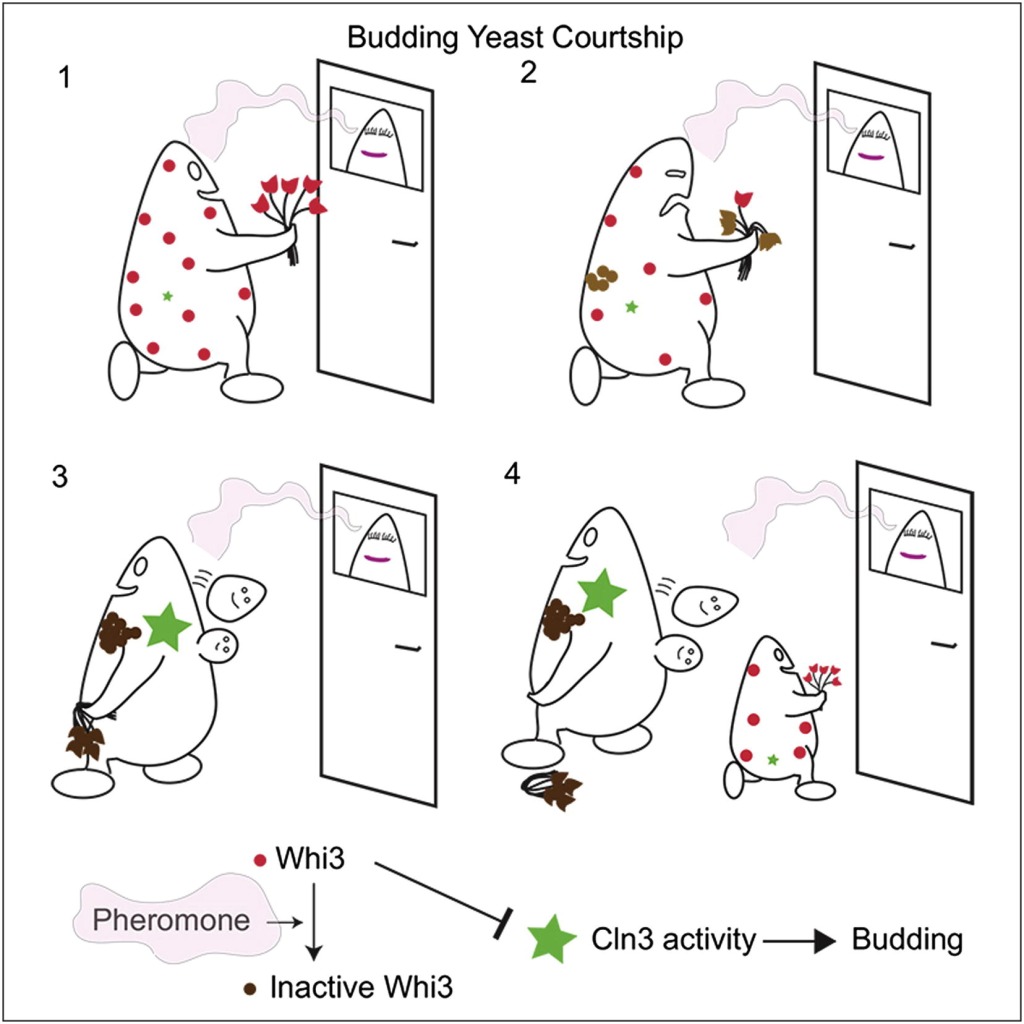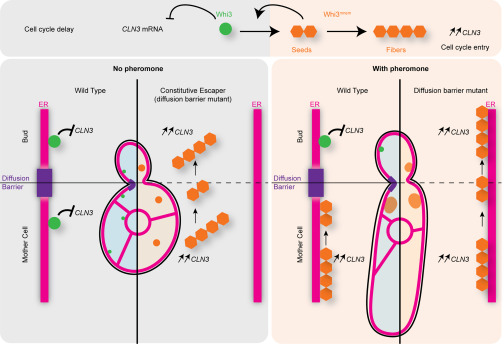Yeast courtship provides an excellent model for how a simple organism manages to remember past events.
Recent yeast studies reveal how this memory can involve prion-like proteins that build up in a cell and persist as a form of memory. In a 2022 issue of Current Biology, Lau et al. show how Whi3p self-templates into large assemblies upon perception of “deceptive courtship,” i.e., when pheromone is perceived but no mating partner appears. The super-assembly state allows escape from the G1 arrest triggered by potential courtship, but also prevents any further response to pheromone. While this pheromone refractory state is stable for the remainder of this mother cell’s life, daughter cells do not inherit this state and are fully pheromone responsive.

Illustration from Caudron and Barral, 2013
The organization of domains in Whi3p and the ability to self-template into large assemblies are features shared with prions. The lack of infectious heritability, though, distinguishes Whi3p as a mnemon rather than a prion. Fascinatingly, Lau et al. show that assembled Whi3p becomes heritable in cells with defective diffusion barriers, where the physical barriers at the bud neck normally restrict the super-assembled protein to the mother cell.
In studies of diffusion barrier disruption, the authors observed that the main super-assembly of Whi3p remains in the mother cell, while the daughter cells get “seeds” of Whi3mnem upon which to assemble further. They note that transmission of seeds is most prevalent in the first few divisions following escape from pheromone arrest, which suggests there is a limiting factor to this diffusion. They propose a model in which the assembled Whi3mnem “matures” to a form that no longer propagates seeds to daughter cells, even in the absence of a barrier.
Thus, remarkably, prion-like behavior appears to be one of the most rudimentary forms of memory, and may have implication for understanding cell memory in higher organisms.
